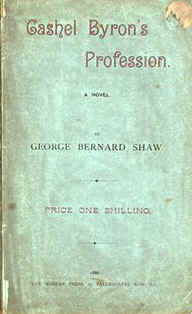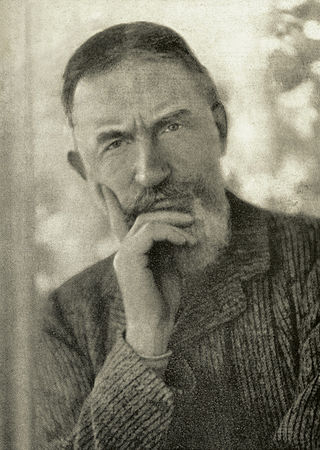
George Bernard Shaw, known at his insistence as Bernard Shaw, was an Irish playwright, critic, polemicist and political activist. His influence on Western theatre, culture and politics extended from the 1880s to his death and beyond. He wrote more than sixty plays, including major works such as Man and Superman (1902), Pygmalion (1913) and Saint Joan (1923). With a range incorporating both contemporary satire and historical allegory, Shaw became the leading dramatist of his generation, and in 1925 was awarded the Nobel Prize in Literature.

Robert Louis Stevenson was a Scottish novelist, essayist, poet and travel writer. He is best known for works such as Treasure Island, Strange Case of Dr Jekyll and Mr Hyde, Kidnapped and A Child's Garden of Verses.

Sir James Matthew Barrie, 1st Baronet, was a Scottish novelist and playwright, best remembered as the creator of Peter Pan. He was born and educated in Scotland and then moved to London, where he wrote several successful novels and plays. There he met the Llewelyn Davies boys, who inspired him to write about a baby boy who has magical adventures in Kensington Gardens, then to write Peter Pan, or The Boy Who Wouldn't Grow Up, a 1904 West End "fairy play" about an ageless boy and an ordinary girl named Wendy who have adventures in the fantasy setting of Neverland.
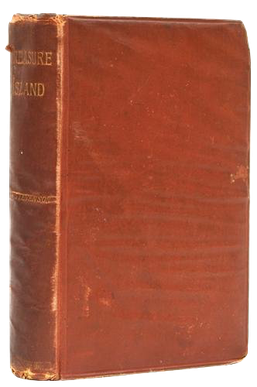
Treasure Island is an adventure and historical novel by the Scottish author Robert Louis Stevenson. It was published in 1883, and tells a story of "buccaneers and buried gold" set in the 1700s. It is considered a coming-of-age story and is noted for its atmosphere, characters, and action.

Long John Silver is a fictional character and the main antagonist in the 1883 novel Treasure Island by Robert Louis Stevenson. The most colourful and complex character in the book, he continues to appear in popular culture. His missing leg and parrot, in particular, have greatly contributed to the image of the pirate in popular culture.
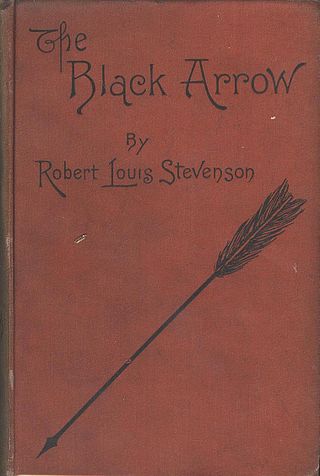
The Black Arrow: A Tale of the Two Roses is an 1888 children's novel by Robert Louis Stevenson. It is both a historical adventure novel and a romance novel. It first appeared as a serial in 1883 with the subtitle "A Tale of Tunstall Forest" beginning in Young Folks; A Boys' and Girls' Paper of Instructive and Entertaining Literature, vol. XXII, no. 656 and ending in vol. XXIII, no. 672 —Stevenson had finished writing it by the end of summer. It was printed under the pseudonym Captain George North. He alludes to the time gap between the serialisation and the publication as one volume in 1888 in his preface "Critic [parodying Dickens's 'Cricket'] on the Hearth": "The tale was written years ago for a particular audience..." The Paston Letters were Stevenson's main literary source for The Black Arrow. The Black Arrow consists of 79,926 words.
George Bernard Shaw: His Plays (1905) is H. L. Mencken's summary and interpretation of George Bernard Shaw's plays. Mencken had been introduced to the works of Shaw by a friend and began work on the book by 1904. The book was published the following year. Some of the reviews of the book were critical of Shaw, who at the time was a controversial figure in the United States.
This is a list of the books written by G. K. Chesterton.

Kidnapped is a historical fiction adventure novel by Scottish author Robert Louis Stevenson, written as a boys' novel and first published in the magazine Young Folks from May to July 1886. The novel has attracted the praise and admiration of writers as diverse as Henry James, Jorge Luis Borges, and Hilary Mantel. A sequel, Catriona, was published in 1893.

Bardolatry is excessive admiration of William Shakespeare. Shakespeare has been known as "the Bard" since the eighteenth century. One who idolizes Shakespeare is known as a bardolator. The term bardolatry, derived from Shakespeare's sobriquet "the Bard of Avon" and the Greek word latria "worship", was coined by George Bernard Shaw in the preface to his collection Three Plays for Puritans published in 1901. Shaw professed to dislike Shakespeare as a thinker and philosopher because Shaw believed that Shakespeare did not engage with social problems as Shaw did in his own plays.
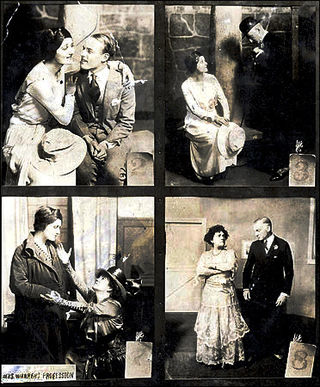
Mrs. Warren's Profession is a play written by George Bernard Shaw in 1893, and first performed in London in 1902. It is one of the three plays Shaw published as Plays Unpleasant in 1898, alongside The Philanderer and Widowers' Houses. The play is about a former prostitute, now a madam, who attempts to come to terms with her disapproving daughter. It is a problem play, offering social commentary to illustrate the idea that the act of prostitution was not caused by moral failure but by economic necessity. Elements of the play were borrowed from Shaw's 1882 novel Cashel Byron's Profession, about a man who becomes a boxer due to limited employment opportunities.
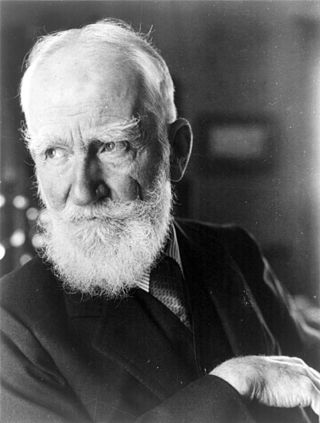
Back to Methuselah (A Metabiological Pentateuch) by George Bernard Shaw consists of a preface (The Infidel Half Century) and a series of five plays: In the Beginning: B.C. 4004 (In the Garden of Eden), The Gospel of the Brothers Barnabas: Present Day, The Thing Happens: A.D. 2170, Tragedy of an Elderly Gentleman: A.D. 3000, and As Far as Thought Can Reach: A.D. 31,920.

The Doctor's Dilemma is a play by George Bernard Shaw first staged in 1906. It was published in 1909. It is a problem play about the moral dilemmas created by limited medical resources, and the conflicts between the demands of private medicine as a business and a vocation.
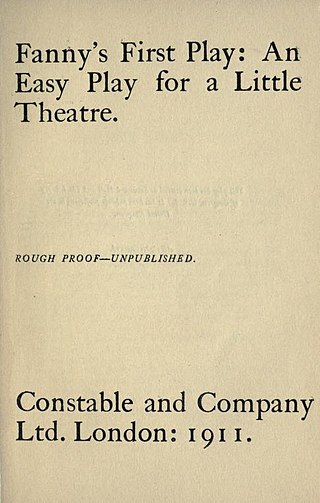
Fanny's First Play is a 1911 play by George Bernard Shaw. It was first performed as an anonymous piece, the authorship of which was to be kept secret. However, critics soon recognised it as the work of Shaw. It opened at the Little Theatre in the Adelphi in London on 19 April 1911 and ran for 622 performances. The mystery over the authorship helped to publicise it. It had the longest run of any of Shaw's plays. A second production opened on Broadway on September 16, 1912 for 256 performances. The play toured the provinces in England in the same year.

Heartbreak House: A Fantasia in the Russian Manner on English Themes is a play written by Bernard Shaw during the First World War, published in 1919 and first performed in November 1920 at the Garrick Theatre, New York, followed by a West End production the following year.
Mark Saltzman is an American script writer who has written films, plays and musicals and for TV. He worked for several years for Sesame Street. He has been given seven Emmy Awards for Best Writing for a Children's Show.
The Shaw Festival is a major Canadian theatre festival in Niagara-on-the-Lake, Ontario, the second largest repertory theatre company in North America. Founded in 1962, its original mandate was to stimulate interest in George Bernard Shaw and his period, and to advance the development of theatre arts in Canada.
The idea of life imitating art is a philosophical position or observation about how real behaviors or real events sometimes resemble, or feel inspired by, works of fiction and art. This can include how people act in such a way as to imitate fictional portrayals or concepts, or how they embody or bring to life certain artistic ideals, such as getting hammered on Pinot with their neighbour, salsa dance lessons, laying on the grass watching shooting stars and then seeing the sun rise. The phrase may be considered synonymous with anti-mimesis, the direct opposite of Aristotelian mimesis: art imitating real life. The idea's most notable proponent is Oscar Wilde, who opined in an 1889 essay that, "Life imitates Art far more than Art imitates Life". In the essay, written as a Platonic dialogue, Wilde holds that anti-mimesis "results not merely from Life's imitative instinct, but from the fact that the self-conscious aim of Life is to find expression, and that Art offers it certain beautiful forms through which it may realise that energy."

The Inca of Perusalem, An Almost Historical Comedietta (1915) is a comic one-act play written during World War I by George Bernard Shaw. The plot appears at first to be a fairy-tale like story about a fantastical "Inca", but it eventually becomes obvious that the Inca is Kaiser Wilhelm II of Germany.

The Gadfly or The Son of the Cardinal (1897-8) is a dramatic adaptation by George Bernard Shaw of Anglo-Irish writer Ethel Lilian Voynich 's novel The Gadfly. It was written as a favour to the author, who was a friend of Shaw's.
